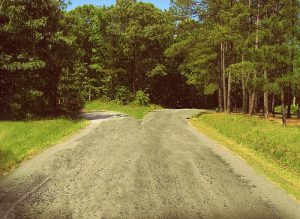Spotting New Trends-
It is said that hindsight is 20/20. It’s easy to think, “If I had just bought apartments in Paris in the 80s, or tech stocks before the bubble, or gold in 2000 or 2001, I’d be sitting on a fortune right now.” The thing is, kicking yourself for lost opportunities doesn’t do you much good. A better strategy is to start focusing on not missing “home run” type investments like these in the future.
So, how does one go about cashing in on fast-moving trends and identifying “the next big thing”? Many will tell you that making money like this is all about chance, that you just have to be lucky. Well, I’d be lying if I said there wasn’t some luck involved, but the quote “the harder I work, the luckier I get” by Samuel Goldwyn comes to mind.

So, here is the formula for spotting and cashing in on trends:
- Modeling. If possible, base your research on a real-life example (or two) elsewhere in the world. If you’re evaluating a real estate opportunity, find places that were similar to your given market 5, 10, or 20 years ago, and study how they evolved over time.
If you’re looking at the spending habits of a country that has a rapidly growing middle class, look at another country with similar cultural characteristics that went through the same change in the past, and find sectors which became much more popular during their years of growth.For example, I’ve been studying both urban and rural real estate trends for several years. When looking at urban areas, I’ve noticed there is a very common progression that usually takes place within city centers. The industrial/rundown areas close to downtown become popular with artist/bohemian types, because rents are low, there are plenty of vacant places, and getting around is easy. With their art galleries, concerts, coffee shops, and loft apartments, these areas become much more attractive over time. Within five or ten years, it’s common for the neighborhood to go through a complete transformation. Spotting these trends early can lead to big wins. - Ear to the ground. The more you can learn about the current situation you’re analyzing, the more success you’ll have. Keep up with breaking news related to the industry. Spend time in the field and get to know the people who work in the industry, but not just the most established players. Identify the future “movers and shakers”, and try to understand what the next generation is going to want.
- Economic support. It’s very important after you’ve spotted a trend to evaluate whether the local financial/economic situation will support the trend over the coming years. If incomes in a certain area are rising, many sectors will do well. However, even in slower economies, you can still boost your profits by hand picking your market. If interest rates are rising, you’ll have to be careful, because it means people are going to be paying more for credit (most likely, limiting their spending). If you can find a place with expanding credit and strong consumer spending, there is a good chance your trend could have a long way to run.
- Gumption.After you’ve done your research and identified a promising trend, make your plan and stick to it. Often, when you find a trend that really presents a lot of opportunity, no one else is investing in it at the time. This means your family, friends, and neighbors will most likely call you “crazy” for considering putting your time and energy into such a “hair brained” idea. Contrarian investors know all about this.Long ago, I considered investing in organic agriculture stocks (back when they sold for pennies) but was talked out of it by friends and family. When I started investing in gold at less than $750 per ounce, most people I knew told me I was going to lose all my money. They said the same thing when I started buying property in Chile.
Moral of the story: don’t lose your nerve at the last minute.
One of the best things about living an international lifestyle is gaining some experience and insight which can allow you to spot trends in places where the local population would have a hard time identifying them.
With all the emerging economies in Latin America and Asia right now, new trends are developing all the time. You can decide if you want to invest passively (stocks or hard assets), or more aggressively (through operating a business), and there are opportunities to suit anyone’s fancy. There’s a whole wide world out there to explore, and spotting a new trend now could make all the difference further down the road.
By Darren Kaiser, International Man
[Spotting good opportunities ahead of the curve is a key focus of World Money Analyst. ]
See Also:
